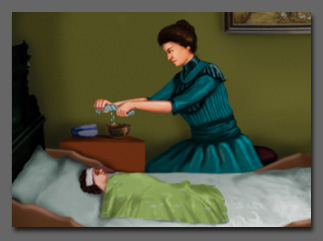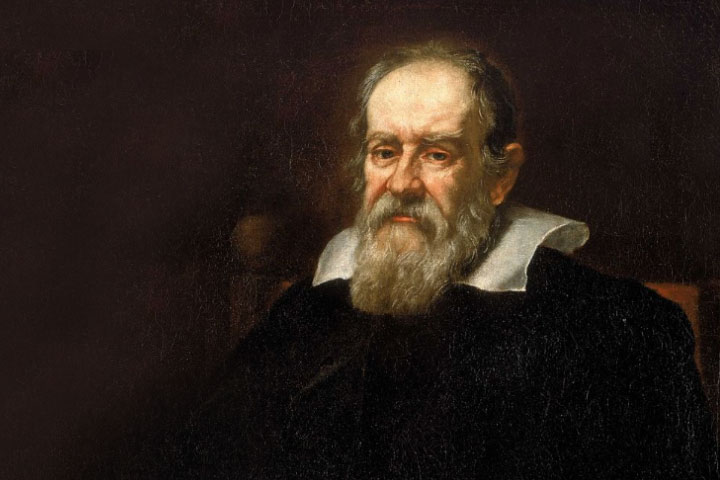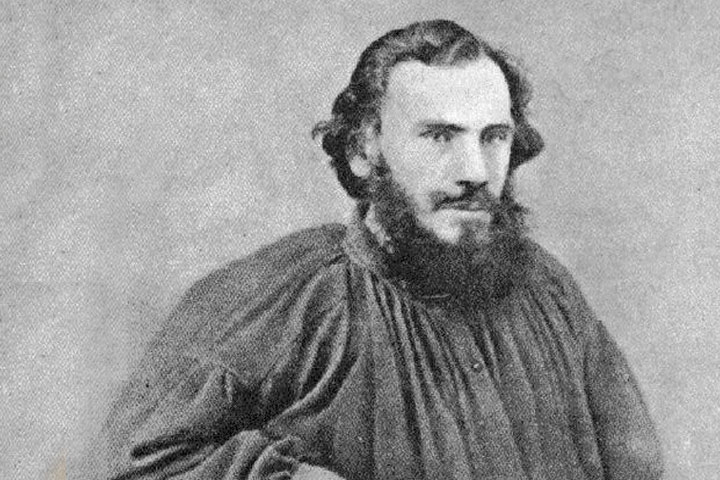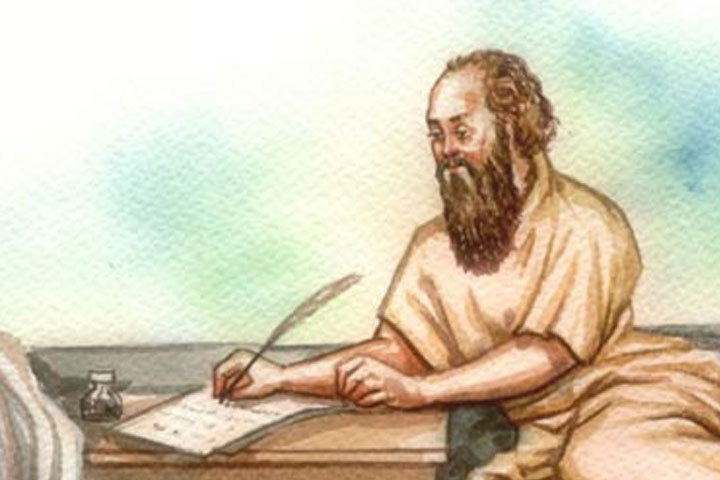

Most of us in this world are blessed to have all our senses intact. We are able to see the marvels of nature – the beautiful sky, the sun, the pretty birds, the blooming colorful flowers, the twinkling stars, the luminous moon and all the greenery around us which gives us a great visual treat. We hear with delight the wonderful chirping of the birds, the fluttering of the leaves, the tinkling of bells and to everyday sounds. We can see, hear and speak to our cherished ones clearly and our senses of touch and smell also help us in our contact with our surroundings.
Now, just close your eyes to the world for some time, plug your ears with cotton and imagine that you do not even know how to speak. Now see the world through the eyes of the blind, hear it through the ears of the deaf and talk through the mouth of the dumb – that’s right, with all three senses lost! Try getting through enormous barriers like that and very soon you will realize what an extraordinary great human being Helen Keller was! Here was a person who broke these barriers and went on to earn a college degree, write twelve books in her lifetime, travel all around the world, meet twelve U.S Presidents and live her life to the fullest.
Helen Keller is one of the most remarkable woman of the 20th century. She overcame the adversity of being blind and deaf with timely assistance and went on to become the torch bearer for millions the world over. She was an intelligent and an exemplary humanitarian, she was also the co-founder of the American Civil Liberties Union (ACLU). She worked at the American Foundation for the Blind (AFB) for 44 years. She created a destiny for the blind and deaf-blind by her humanitarian efforts and instilled courage in them. She helped standardize Braille as the international written language for the blind. She taught the world to respect people who are blind and deaf.
As she herself has remarked once, “Character cannot be developed in ease and quiet. Only through experience of trial and suffering can the soul be strengthened, ambition inspired and success achieved.”
From the moment of her birth till her death, which is not really the end, her life is an eternal inspiration for all and her name will live on forever. Come, let us traverse the journey of her incredible life which has been turned into dramas and films in many languages.

Helen Keller Childhood Years

The Breakthrough
In 1886, when Helen was six years old, a travelogue ‘American Notes’ by the famous writer Charles Dickens, proved to be an inspiration to Helen’s mother. The travelogue chronicled the successful education of another deaf and blind child, Laura Bridgman. Soon, Helen’s parents took her to meet an eye specialist Dr.J.Julian Chisolm at Baltimore, Maryland to see if any good could be done to her eyes. Dr. Chisolm could do nothing but he kindly recommended Dr. Alexander Graham Bell of Washington for information on schools and teachers for deaf and blind children.
This led to an appointment with Dr.Bell, the inventor of the telephone, who was working with deaf children at that time. Dr. Bell was tender and endearing to Helen. He understood Helen’s signs very well and this meeting was the doorway to light, love, knowledge and friendship for Helen. At the suggestion of Bell, Helen and her parents traveled to the Perkins Institute for the Blind in Boston, Massachusetts, which had been the scene of Dr. Samuel Gridley Howe’s great labors for the blind. The Director of the Institute, Michael Anaganos recommended the institute’s most recent graduate, 20-year old Miss Anne Mansfield Sullivan to tutor the half-wild, deaf and blind Helen Keller.
Anne Mansfield Sullivan was born on 14th April, 1866 in Agawam, Massachusetts. Her family being poor, she was sent to live at the age of ten in a home for the poor. Anne Sullivan also suffered from poor vision due to trachoma. She herself had regained useful sight after a series of operations. Later, at 14 years, she was sent to the Perkins School for the Blind to receive training to teach blind children. Miss Sullivan was an enthusiastic and inspiring teacher. Having borne adversity herself, she was very well aware of the life that awaited Helen if she was banished to an institution. She sought to mould Helen with her persistence and disciplined effort.

Advent of Helens Driving Force
Thus began a long and remarkable relationship between Anne Sullivan and her pupil, Helen Keller. It takes a loving, patient and understanding teacher to bring about a total transformation in the pupil and this is exactly what Anne Sullivan did. Probably because of Anne’s empathetic and considerate nature, this relationship lasted for almost 49 years. Anne Sullivan is remembered the world over as ‘The Miracle Worker’ for the love, patience and dedication with which she handled her pupil, and brought light into her dreary life.
Anne Sullivan began tutoring Helen Keller from 3rd March 1887 at her home in Alabama. This was to be the most important day of Helen Keller’s life. She was just 7 years old then. Helen stretched out her hand and was held in a warm embrace by her teacher. After every storm in life, comes the calm. Helen had no way of knowing then, that her teacher Anne was the compass of her life and would direct her to the light of knowledge she so wanted to see in her mind. Anne had brought along a doll prepared for Helen by the institute’s children as a gift. She used ‘manual sign language’ and spelt out the word ‘doll’ in Helen’s hand to help her understand the gift. She taught her many other words likewise. Helen was sometimes curious, sometimes defiant. This is when Anne Sullivan realized that Helen just could not make the connection between the objects and the letters spelt out in her hand. Both teacher and pupil went through the regimen repeatedly. In frustration, Helen dashed the doll upon the floor and was pleased that her cause of discomfort was finally destroyed. Helen’s tantrums kept on growing but her teacher treated her as a perfectly normal child and meted out punishment when she misbehaved.
Sometimes, Helen would stand between two people who were conversing and touch their lips. At first, she was utterly vexed and made wild gestures without understanding. She would be prone to spells of anger and used to kick and scream. However, with time, her wild ravings were brought under control by her teacher. Anne continued the use of finger-spelling to teach Helen the names of objects, by tapping out the letters in Helen’s hand. Helen considered this a game and quickly learnt the finger spell patterns. She could not however relate the tapped out letters to the names of objects. The link was somehow missing as perhaps she had become deaf-blind at a very young age, before she could understood the things around her.

The Miraculous Moment - A New Dawn
To help Helen concentrate solely on her instructions, Anne Sullivan suggested isolation from the rest of the family for a time. They moved to a cottage on the plantation where they could be undisturbed.

It was a beautiful and bright spring day of April 5, 1887 but the beauty of the white clouds floating in the blue sky and the flowers blooming around went unnoticed by Helen. The chirping and fluttering of the birds through the trees also went unheard by little Helen. Oblivious to the splendor of Mother Nature around her, Helen stood near a simple well-pump holding out her hand under the spout. Her tutor, Anne Sullivan was steadily pumping cool water into the girl’s hand, while repeatedly tapping out five letters – W-A-T-E-R- into Helen’s other hand – slowly, then rapidly. Again and again, the motions were repeated. Helen, blind and deaf, stood with the cool water flowing on her one hand and her attention fixed upon the repeated tapping of letters on her other hand. The painstaking struggle to break her world of silence and darkness mounted incessantly in her consciousness.
Suddenly, the darkness gave way to light and Helen’s consciousness realized the link, that the cool something flowing over her hand meant ‘water’. The revelation was a divine moment for her, a miraculous breakthrough in her life. It was like an awakening of her soul, setting it free joyfully with the wings of light and hope. ‘Water’ was one of the few words she had learnt before she became deaf-blind and her speech was lost. The thrill of returning to thought and the mystery of language was now revealed to her. ‘Water’ was the key which unlocked the world for her. Immediately, she touched the earth and demanded its ‘letter name’. By nightfall, she had learnt thirty words; words like mother, father, sister, and teacher; words that made her world blossom ‘like Aaron’s rod, with flowers.’ For the first time, Helen longed for a new day to come. Her whole attitude changed. A strange new sight had come to her and she remembered the doll she had broken with repentance.
‘Knowledge is love and light and vision.’ There were names for everything and each name gave birth to a new thought. A new dawn had awakened her soul. She picked up the language now with extraordinary agility and in six months, she had mastered around 625 words.

Nature The Best Teacher
The seed of learning thus sown, began to sprout. Helen had to re-create everything in her mind’s eye through smell and touch alone and gradually, with her teacher’s training and family’s support, Helen realized that life was interesting and very much worth living. She was to say much later, “If I, deaf, blind, find life rich and interesting, how much more can you gain by the use of your five senses!” She also realized that if she was determined enough, she could achieve anything in life.
Nature, as we all know, is the best teacher. Helen’s home in Tuscumbia was ensconced in the attractive beauty and the solitude of the hills. Miss Sullivan taught Helen the beauty, magnificence and abundant graciousness of nature through outdoor treks across the fields and to the banks of the river. Sitting on the warm grass, Helen learnt how the sun provided sunlight and the rains gave water for every beautiful plant and tree lacing the earth. She learnt how the animals found food and shelter and how the birds built their nests. Through Anne, Helen felt the delight of the world she lived in. Her Anne taught Helen to touch and smell the flowers, to feel the wind on her face and to experience nature’s glory. But Helen also had a bitter experience when she was sitting underneath a tree and sunlight left her to reveal a thunderstorm in the offing. She was saved in the nick of time by her teacher, but she learnt that day, that ‘nature wages open war against her children and under softest touch hides treacherous claws.’ This incident dampened her enthusiasm for some time till her enchantment for the mimosa tree overcame her fears.
Miss Sullivan was a wonderful teacher and made study, seem like play for Helen. She had a long association with the blind and could describe things wonderfully. Helen learnt things first hand about science through playful interaction with nature, through frogs and crickets held in her hands and the blossoms and violets held softly. Helen had refined senses of smell and touch. She loved to go the orchard and delighted in gathering fruits in her pinafore. Helen learnt geography by building dams of pebbles, making islands and lakes, digging river beds and making raised maps in clay, all on the banks of the Tennessee River with her teacher, Anne. Likewise, she learnt Zoology and Botany too. However, she did not like much the science of numbers – Arithmetic. Anne Sullivan was a genius of a teacher and made Helen learn everything from life itself. She developed and encouraged Helen to make her life more meaningful, sweet and useful. Being blind and deaf, Helen learnt words slowly and painfully. The result was wonderful though. She was a very inquisitive child and as she learnt more and more words and her vocabulary and knowledge grew, her inquisitive nature broadened.
The next important step for Helen was to learn to read. Initially, Anne The next important step for Helen was to learn to read. Initially, Anne gave Helen slips of cardboards with words printed in raised letters. Helen had a frame in which to arrange the words in sentences. These were done for everyday acts of work or play. Then from printed slips, Helen graduated to books in raised print, to the ‘Reader for Beginners’, a collection of stories for children and ‘Our World’, a book about the earth. Patiently, Anne taught Helen to express herself through the manual alphabet. Helen could now form simple sentences too. She used finger-spelling for much of her communication but she had also learnt the shapes of letters. She could print using block letters and for writing, she used a grooved writing board. She also learnt the Braille alphabet.
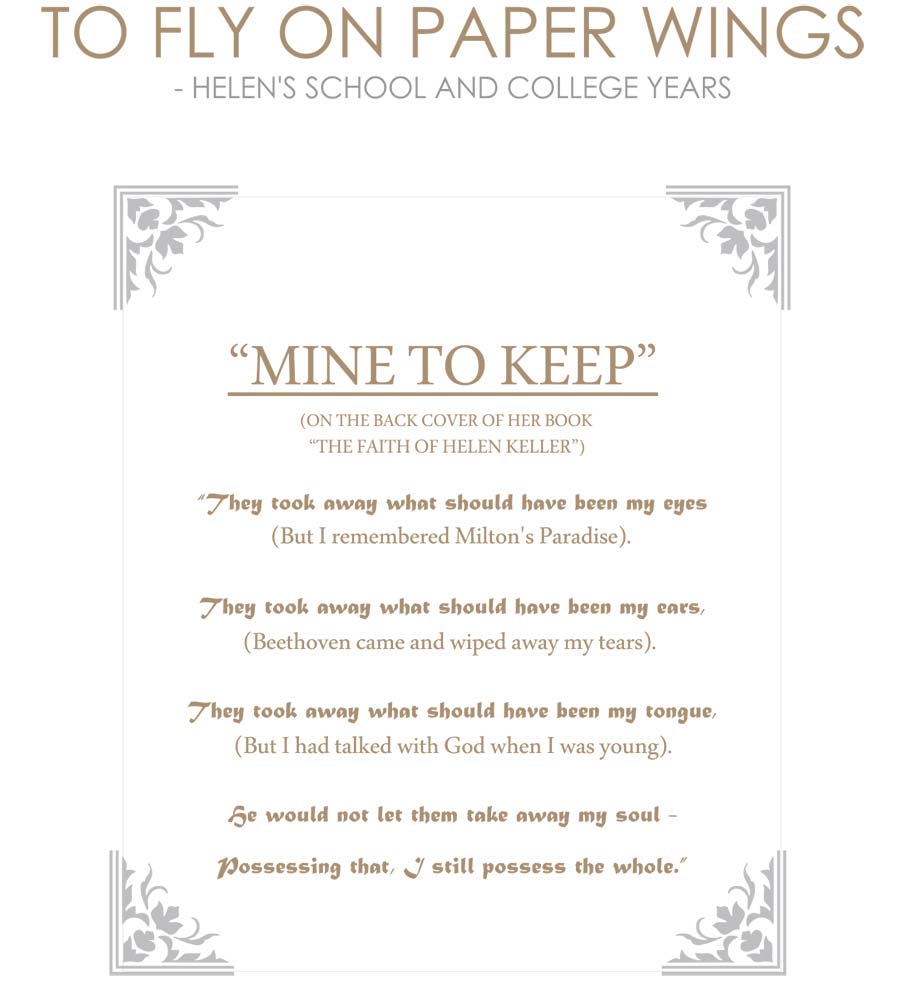
On Paper Wings
At the age of eight, ‘Little Lord Fauntleroy’ was the first book that Helen read understandingly. She loved the story and the prime character became her childhood companion. The world of words and knowledge fascinated Helen and she tried to read every page in raised print her fingertips got hold of. She especially liked ‘Little Women’, ‘Heidi’, ‘The Jungle Book’ and ‘Wild Animals I have known.’
While indoors, Helen used to play checkers and chess on special boards with a friend. She liked to play outdoors and enjoyed riding, cycling, rowing and swimming. But books were her good friends. The news and wonders of the world outside her own, lay inside the covers of the books she read. Helen used to say, “How easy it is to fly on paper wings!”
The next significant event in Helen’s life was her visit to the Perkins Institution for the Blind in Boston in May 1888, along with her mother and teacher. There she made friends with other little blind children just like her. She was both surprised and pained to know that all the eager, loving children who placed their hands over hers as she talked to them were also blind. But the delight of their friendliness made her forget the sense of pain. In the fall of 1889, Helen left Alabama and joined the Perkins Institution for the Blind in Boston with Anne. This was her first formal education. The institute had a wonderful array of resources and this exposure increased Helen’s abilities. She began to read earnestly and also learnt Latin, French, Greek and German and was given the name of “miracle’ child”. She quickly learnt to master the alphabet, both manually and in Braille dots.
The ancient city of Greece fascinated Helen and she loved the Greek language very much. According to Helen, “If it is true that the violin is the most perfect musical instruments, then Greek is the violin of human thought.” She also loved the works of Shakespeare, and was impressed with the play “Macbeth” the most. As word of Helen’s achievements spread, Helen Keller started to become a national and international celebrity. She was the subject of many articles that focused and published the difficulties being faced by such children and their need to live a fulfilling life. She received many gifts in the form of books, toys, pets and other things from friends and well-wishers all over the world. They all wished for her health and happiness and this was their way of showing affection. Helen used her fame to educate people about the blind and raise funds for several charities. At the age of 9, she was corresponding and was friends with eminent personalities like John Greenleaf Whittier (an influential American Quaker poet and ardent advocate of the abolition of slavery in the United States), Oliver Wendell Holmes (an American physician, poet, professor, lecturer and author), Wordsworth (a major English Romantic poet) and Mark Twain (an American author and humorist).
At 10 years of age, Helen inquired in a letter to her friend, Rev. Phillips Brooks asking him about “God”. Rev.Brooks wrote back to her, “We come to know about our Heavenly Father through the power of love which is in our hearts. Love is at the soul of everything. God who is the greatest and happiest of all beings is the most loving too. All the love that is in our hearts comes from him as all the light which is in the flowers comes from the sun. And the more we love, the more near we are to God and His love.” He further explained to her that as per the Bible, the most beautiful answer for what “God” is – “God is Love.”

Helen learnt to use the typewriter by the age of 10. She was an excellent typist, even better than her tutor, Anne Sullivan. Her inspiring story led to ships being named after her. She even met President Grover Cleveland at that little age.
Helen helped to raise funds to secure a tutor for Tommy Stringer, a 4-year old blind-deaf boy, whose mother was dead and father was too poor. She saved her pennies and solicited contributions from friends all over. Tommy was later admitted to the kindergarten of Perkins Institute. Tommy Stringer was in Helen and Anne’s care till a kind tutor was found to teach him. Helen wrote letters to newspapers and acknowledged the contributions which came for Tommy’s education.
In 1890, Helen expressed her desire to learn to speak. One day, she heard about Ragnhild Kaata, a deaf and blind girl in Norway who was taught to speak, by Mrs. Lamson, one of Laura Bridgman’s teachers. So, Helen’s speech classes started at the Horace Mann School for the Deaf in Boston on 26th March, 1890. Her first speech teacher from the school was Miss Sarah Fuller. Miss Fuller had Helen feel the shape of her mouth when she spoke, feeling inside the mouth to feel the position of her tongue. Helen shaped the sounds on her own. First she learnt to say letter sounds and then syllables. Helen toiled hard on her speech so that others could comprehend her. The first connected sentence she spoke was “It is warm.” She also learnt to read lips with her fingers. In 1891, Helen’s brother, Phillips Brooks Keller was born. It was Helen who suggested the name for her little brother after her good friend Rev Phillips Brooks. Helen had by then learnt language and understood affections and was close to her sister and brother.
Before leaving Boston in 1892, Helen was asked to write her life-sketch for the Youth’s Companion. While writing it, Helen realized the precious companionship her books provided her with, and how blessed she was with the happiness they gave her. Helen cared a lot for other deprived blind and deaf-blind children like her and used to host fund raisers for them. In May 1892, Helen gave a tea party in aid of the kindergarten for the blind in the house of the sister of one of her most kind and liberal friend, Mr. John P Spaulding. $2000 were raised on this occasion.
In the spring of 1893, the ‘Helen Keller Public Library’ was established with books, monetary help and land donated by kind people. When Helen was 13 years old, she and Anne Sullivan moved to New York City. Here she went to the Wright-Humason School for the Deaf, from 1894 to 1896. Besides studying regular academic subjects, she further improved upon her communication skills and the very best vocal culture and training in lip-reading was available here. Helen’s father, Captain Arthur Henley Keller died suddenly when she was just 16. The sad news of her father’s death reached Helen in the summer of 1896. This was Helen’s first great sorrow, her first personal experience with death.
Now, at 16, Helen could speak well enough and was determined to go for college. Even when she was a little girl, she used to say, “Someday I shall go to college.” In 1898, she entered the Cambridge School for Young Ladies in Massachusetts, a preparatory school for women. Here she studied Astronomy, Literature, History, Mathematics and Physics. She got embossed text books for her study and other apparatus like the Braille writer. For some time, even her kid sister, Mildred studied in Helen’s school. Helen and Mildred helped each other in their study and played together.
During this time, her story of grit and talent spread far and wide and became known to the general public. Helen Keller began to meet various famous and influential people who were very impressed by her. She was friends with the writer Mark Twain and through him was introduced to his friend, Henry H.Rogers, a Standard Oil executive and Laurence Hutton, an editor and critic. Rogers agreed to pay for her college fees at Radcliffe. Her years of study in school and college were made possible by the strong support of her mother, her teacher Anne Sullivan, Laurence Hutton and Mr. Rogers. Helen entered Radcliffe College, the women’s branch of Harvard University in 1900. It was during her graduation that Helen Keller wrote the first volume of her autobiography, “The Story of my Life”. It was published serially in the Ladies’ Home Journal. In 1902, it was published as a book. She received her Bachelor of Arts degree “cum laude” (with honors) on June 28, 1904, at the age of 24. She became the first deaf-blind individual to earn a college degree. Throughout her years of learning in school and college, Miss Anne Sullivan was always by Helen’s side, interpreting lectures and class discussions to her, even laboriously spelling book after book into her hand. With Anne’s help, Helen made tremendous progress with her communication abilities.
By this time, Helen had become familiar with Braille, typing, touch lip-reading, speech and finger-spelling. She had once said, “Literature is my Utopia. Here I am not disenfranchised. No barrier of the senses shuts me out from the sweet, gracious discourses of my book friends. They talk to me without embarrassment or awkwardness.”
Like anyone else in her place would be, Helen did feel isolated sometimes. Still bitter words would not come out of her lips and they went back into her heart like unshed tears. She carried hope and joy in her heart for others – “There is joy in self-forgetfulness. So I try to make the light in others’ eyes my sun, the music in others’ ears my symphony, the smile on others’ lips my happiness.”
After her formal schooling ended, Helen kept on adding to her knowledge by staying informed on all important matters of the world through newspapers and books with her teacher Anne’s help. On account of this, she received many honorary doctoral degrees – from Harvard University and Temple University, and from the universities of Glasgow, Scotland; Berlin, Germany; Delhi, India; and Witwatersrand in Johannesburg, South Africa. She was also named an Honorary Fellow of the Educational Institute of Scotland.
In 1905, Anne Sullivan married John Macy, an instructor at Harvard University and a well-known socialist and eminent critic. Anne continued to be Helens’ guide and mentor even after her marriage. Later when Helen went to live with the Macys, she got undivided attention from them initially. They helped her with her studies and other activities. However, in due course, the distance between Anne and John grew. Many years later, Anne and John Sullivan got separated though they never divorced. Anne continued to devotedly take care of the welfare of her pupil, Helen.

Foray Into Social Activism
The public indifference to the plight of the handicapped appalled Helen Keller. She wished to improve the lives of others and started working on behalf of people with disabilities. According to her, “We are never really happy until we try to brighten the lives of others.” She lectured and shared her experiences with her audiences and became a well-known celebrity. She pioneered the education of the public in the prevention of blindness of the newborn. She lived in an era where people afflicted like her were put in asylums. She helped put a stop to such practices by strongly advocating the education and welfare of blind people.
Helen joined the Socialist Party of America in 1909. Her political views were influenced by conversations with Anne and her husband, John Macy, and by reading the book “New Worlds for Old” by H.G. Wells. It was during their work together on one of her books that John Macy had introduced Helen Keller to Socialism. Helen did however say that her adoption of socialism as her ideology was both heartfelt and inevitable, for it represented to her, a “struggle that resembles my own.” During 1909 to 1921, Helen wrote several articles and essays on socialism and world affairs titled ‘Out of the Dark.’ She also tackled social and political issues, including women’s rights to vote and for birth control.
Helen Keller was usually photographed in a side profile, due to a protruding left eye. In 1910, at her family’s insistence, Helen’s eyes were surgically removed and replaced with glass replicas for medical and cosmetic reasons. Helen joined other organizations dedicated to the underprivileged. In 1912, she joined the Permanent Blind War Relief Fund which was later called the American Braille Press, to battle the causes and effects of blindness and malnutrition. She was among the members of its first board of directors. In 1912, Helen also joined the Industrial Workers of the World (IWW), a socialist trade union group that opposed the policies of the American Federation of Labor. She also wrote articles for the socialist journal, “The Masses”. She publicly supported the National Association for the Advancement of Colored People (NAACP), admired the Russian Revolution and condemned America’s imperialistic motives in the World War. She was active in various campaigns in favor of trade unionism, birth control and those against child labor and capital punishment. It was after she expressed her socialist views that Helen had her first experience of public prejudice regarding her disabilities. Helen recognized the social injustices and blamed industrialism and capitalism as the root of poverty and also disability-inducing disease. Earlier, the press had always been very supportive of her, praising her remarkable courage and intelligence but now, some newspapers started criticizing her by focusing on her disabilities. The editor of the Brooklyn Eagle, a newspaper, wrote that her “mistakes sprung out of the manifest limitations of her development.” Helen Keller was furious and wrote a letter of complaint to the Brooklyn Eagle – “At that time the compliments he paid me were so generous…But now that I have come out for socialism he reminds me and the public that I am blind and deaf and especially liable to error… Socially blind and deaf, it defends an intolerable system… the cause of much of the physical blindness and deafness which we are trying to prevent.”
Helen was even suspected to be a puppet for the pro-leftist ranting of her teacher, Anne Sullivan and her husband, John Macy. The expression of her political views even brought her under the scanner of the FBI for some time. In Helen’s own words, “So long as I confine my activities to social service and the blind, they compliment me extravagantly, calling me ‘arch priestess of the sightless’, ‘wonder woman’, and ‘a modern miracle, but when it comes to a discussion of poverty, and I maintain that it is the result of wrong economics – that the industrial system under which we live is at the root of much of the physical deafness and blindness in the world – that is a different matter!”
In 1915, Helen and Anne got very busy and Helen received a deluge of letters from all over the world from people who read her books. She wanted to reply to every letter and help the cause of the blind. In the meantime, her teacher, Anne Sullivan’s health had also started to fail. So they began searching for a secretary and this led to the arrival of Polly Thomson, a young woman from Scotland, into their lives. She joined as Helen’s secretary and housekeeper and later ended up as a companion for both, Helen and Anne.

Fragrance Of Love
In 1916, Peter Fagan, a 29-year old socialist and newspaper man was hired to help Helen Keller when Anne Sullivan was ill and her secretary Polly Thomson was on vacation. Helen was 36 now and was going through an overwhelming and depressing period in her life. Peter declared his love for her and told her that she was beautiful. She had never been told such things before and she too fell in love with him. Peter also learnt the manual finger-spelling language. He spelt the content of newspaper articles and books into Helen’s open palm. They took walks together and enjoyed each other’s company. Helen later said, “His love was a bright sun that shone upon my helplessness and isolation.” Peter Fagan even applied for a marriage license. However, before Helen could tell her mother about Peter and their marriage plans, a senseless newspaper article appeared regarding their marriage license application and her horrified mother came to know of this matter. Peter was relieved of his duties and sent away. Helen was taken to her sister Mildred’s home in Alabama. In those days, it was against the norms of society for someone in Helen’s condition to marry or harbor such desires.
The romance died its natural death, though there were a few follow up letters in Braille between them. They even planned to elope, but Peter did not show up. Helen was very heartbroken and sad but ultimately believed it to be for the best. Helen later wrote about it, ‘The love which had come, unseen and unexpected, departed with tempest on his wings.’ The love remained with her ‘as a little island of joy which is surrounded by dark waters.’ In an interview to the Chicago Daily Tribune in 1916, Helen said, “All women should marry if they can get anyone to marry them. It’s essential for the race and evolution in the world.”
In 1918, Helen did a silent film called ‘Deliverance’ for Hollywood. But Helen wanted to show her life more accurately. So, she and Anne decided to create a vaudeville act. It would help both ways – since they needed the money and the world would know of her story which would help others like her. However, they stopped their vaudeville tour in 1922 when Anne started becoming too tired.
Helen shared a very close bond with her mother. Helen liked the fact that her mother had purchased a Braille typewriter herself so that she could write letters to Helen. In March 1920, Katherine Keller, Helen’s mother, had expressed her love for Helen in a letter to her and promised her that if she died, she would see her in the world to come. When Helen Keller and Anne Sullivan were in Los Angeles in November 1921, Helen’s sister Mildred, sent a telegram notifying her of their mother’s death. Helen was then forty-one years old. After her death, Helen missed her mother dearly and felt a deep void in her life. Soon after, Helen also lost her lifelong friend and well-wisher, Dr. Alexander Graham Bell.
Helen Keller was one of the founders of the ACLU in 1920. The ACLU was established for the preservation and extension of the basic rights set forth in the U.S. Constitution. In 1924, Helen Keller became a member of the American Foundation for the Blind – AFB (Estd.1921). The organization invited her to be its spokesperson. It proved to be an effective outlet for Helen to campaign for the blind. She also served on the foundation staff as a counselor on National and International Relations. She decided to devote more time to raise funds and started the “Helen Keller Endowment Fund” for the foundation.
Helen’s book ‘Midstream’ was published in 1929. In it she wrote, “I had once believed that we are all masters of our fate – that we could mould our lives into any form we pleased. I had overcome deafness and blindness sufficiently to be happy, and I supposed that anyone could come out victorious if he threw himself valiantly into life’s struggle. But as I went more and more about the country I learnt that the power to rise in the world is not within the reach of everyone.”

Companions And Pets
Anne Sullivan Macy, Helen’s beloved teacher and devoted companion had been experiencing health problems for several years and in 1932, she lost her vision completely. Later, she also developed an internal disorder and finally passed away in October 1936. Without Anne’s teaching skills and patient efforts, Helen perhaps would have remained isolated and in a world of darkness. Anne Sullivan was without doubt Helen’s dearest friend, teacher and companion. She played an important role in shaping Helen’s life and helped her to communicate well and live a fruitful life. Her death left Helen with a heavy heart. Helen Keller later said of her teacher, “I feel her being is inseparable from my own, and that the footsteps of my life are in hers. All the best of me belongs to her – there is not a talent, or an inspiration or a joy in me that has not been awakened by her loving touch.”
Upon Anne’s death, Polly Thomson became Helen’s constant companion. After Polly Thompson passed away in 1960, Mrs. Winifred Corbally became Helen’s devoted nurse-cum-companion until her last day. Helen had many pets throughout her life – pigeons, puppies, rabbits, a pretty donkey named Neddy, dogs named Lioness and Pearl, a canary bird, a mastiff named Eumer and even a pony named Black Beauty. They were all gifted to her by her many friends and well-wishers across the world. Helen loved dogs very much. She had a variety of dogs as pets throughout her life. In 1937, at the Akita Prefecture in Japan, Helen Keller inquired about Hachiko, the famous Akita dog that died in 1935. She expressed her wish to have an Akita dog and she was given an Akita named Kamikaze-go. This Akita dog died of canine distemper, so, later in July 1938, his brother Kenzan-go, was presented to Helen as an official gift from the Japanese government. Through these two pet dogs of Helen, the United States of America was introduced to the Akita dog.
In the Akita Journal, Helen Keller wrote,
“If ever there was an angel in fur, it was Kamikaze. I know I shall never feel quite the same tenderness for any other pet. The Akita dog has all the qualities that appeal to me – he is gentle, companionable and trusty.”

Writings And Influence
Helen Keller wrote several articles, essays and speeches in magazines and newspapers, mostly on blindness, deafness, socialism, social issues and women’s rights. She has twelve published books to her credit.
One of Helen’s earliest writings was ‘The Frost King’ in 1891, when she was just eleven. She sent it as a birthday gift to her good friend, Mr. Michael Anagnos, the Director of the Perkins Institution for the Blind. Happy with the story, it was published in the next school newsletter. Unfortunately, accusations of plagiarism plagued Helen despite her denials and she was even called before a school tribunal. This incident had a depressing effect on her. Perhaps, she had remembered and written parts of a story she had heard much earlier without realizing it. ‘The Frost King’ seemed similar to a story ‘The Frost Fairies’ by Margaret Canby. Helen later said, “It is certain that I cannot always distinguish my own thoughts from those I read, because what I read becomes the very substance and texture of my mind.” Years later, her friend Mark Twain read her account of this episode in her book, ‘The Story of My Life’ and expressed his outrage over her chastisement. Twain argued that ‘all human thoughts and writings were but a repetition of earlier thoughts held by others, strung together in new variations.’
Helen Keller wrote her autobiography, ‘The Story of My Life’ in 1902, at the age of 22, with the help of Anne and her future husband, John Macy. It covered her transformative years from childhood to college and was written during her college years at Radcliffe. With the money she earned from the book she was able to buy a house. It was published in 1903 and is the most popular of her works today. It has been translated into 50 languages including Marathi, Tagalog, Pushtu and Vedu. ‘The World I Live In’, an insight into how she felt about the world, was written in 1908. In 1913, a series of essays on socialism, ‘Out of the Dark’ was published. ‘My Religion’, her spiritual autobiography was published in 1927. It was later revised, re-issued and published under the title ‘Light in My Darkness.’ It focused on the work of philosopher and theologian Emanuel Swedenborg. Helen Keller was a member of the Swedenborgian religion which was established on his writings.
In 1929, Helen wrote the second volume of her autobiography, ‘Midstream: My Later Life.’ Her other works include ‘Optimism’, an essay (1903); ‘The Song of the Stone Wall’ (1910-poetry); ‘Peace at Eventide’ (1932); ‘Helen Keller in Scotland: A Personal Record Written by Herself’ (1933); ‘Helen Keller’s Journal’ (1938); ‘Let Us Have Faith’ (1940); ‘Teacher : Anne Sullivan Macy : A Tribute by the Foster Child of Her Mind’ (1955) and ‘The Open Door’ (1957).
Helen Keller’s life has been interpreted in plays, documentaries and films many times. She herself appeared in an autobiographical silent film, ‘Deliverance’ in 1919, to spread ‘a message of courage, a message of a brighter, happier future for all men.’ Etna Ross played the part of Helen as a young girl and the older Helen was played by Ann Mason. In the final sequence of the film, the real Helen Keller is seen working tirelessly to improve the conditions of the blind and helping them learn useful trades.
Katharine Cornell, the famous American actress narrated Helen’s story in the documentaries, ‘Helen Keller in Her Story’ and ‘The Story of Helen Keller’, which is part of the Famous American Series produced by Hearst Entertainment. The 1957 television drama ‘The Miracle Worker’ was based on Helen Keller’s autobiography, ‘The Story of My Life.’ It was further developed into a Broadway play of the same name, with Patty Duke as Helen Keller and Anne Bancroft as Anne Sullivan. This play by William Gibson won the Pulitzer Prize in 1960. In 1962, the Oscar-winning film version of the play was made with the same actresses in it by Arthur Penn. The dramatic depictions of the play and film ‘The Miracle Worker’ showed how Anne Sullivan, Helen’s teacher, helped the girl to burst out of her cocoon imposed by her disabilities and allowed her to blossom with the knowledge of communication. In 1984, a TV movie titled ‘The Miracle Continues’ was produced based on Helen’s life story. This movie recounts her college years and her early adult life. In 2005, the Bollywood movie ‘Black’ was mostly based on Helen Keller’s story, right from her childhood to her graduation. The young Helen was portrayed brilliantly by Ayesha Kapoor and the elder one by Rani Mukherjee. In the same year, a documentary called ‘Shining Soul: Helen Keller’s Spiritual Life and Legacy’ was produced by the Swedenborg Foundation. The role played by Emanuel Swedenborg’s spiritual theology in Helen’s life and how it encouraged her to overcome her triple disabilities of blindness, deafness and speech was explored in the film.
From Theodore Roosevelt in 1903 to Lyndon B.Johnson in 1965, Helen Keller met twelve US Presidents and had correspondence with eight of them. She had many notable public figures as her friends including Dr. Alexander Graham Bell, the inventor of the telephone, writer Mark Twain, actor Charlie Chaplin, Indian Prime Minister Jawaharlal Nehru,
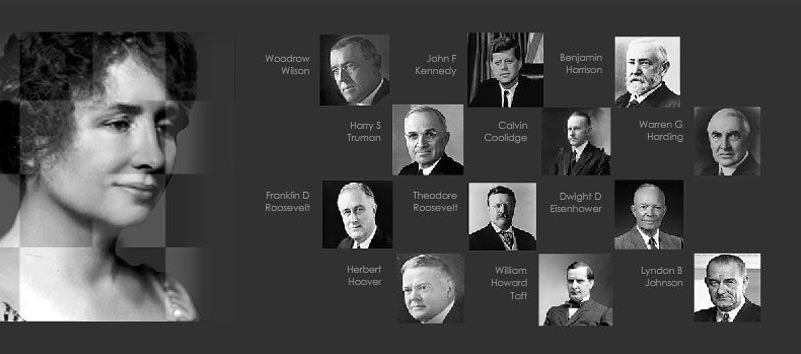
President John F.Kennedy, journalist Max Eastman and President Franklin D. Roosevelt. Mark Twain said of her, “The two most interesting characters of the 19th century are Napoleon and Helen Keller.”

Death Of a Legend
In her last few years, Helen Keller walked the grounds of her home, ‘Arcan Ridge’, in Easton, Connecticut. She would be seen talking to herself with her fingers which were her windows to the world. She spent much time reading and one of her favorite books was the Bible.. Her family, friends and associates of the organizations she served, the AFB and the American Foundation for the Overseas Blind visited her quite often. In recognition of her achievements, Helen Keller received many honors during her lifetime.
Helen suffered a series of strokes in 1961 and on June 1, 1968, she died in her sleep in her favorite residence, Arcan Ridge just a few weeks before her 88th birthday. Mrs. Winifred Corbally, Helen’s companion for the last 11 years, was beside her. Helen’s ashes were placed next to her beloved companions, Anne Sullivan and Polly Thompson in the St. Joseph’s Chapel of Washington National Cathedral. A public memorial service was held on that occasion in the Cathedral. Her family and friends, prominent people from different strata of society, government officials and delegations from blind and deaf organizations, all attended the memorial service.
Senator Lister Hill of Alabama spoke of Helen Keller thus, “She will live on, one of the few, the immortal names not born to die. Her spirit will endure as long as man can read and stories can be told of the woman who showed the world there are no boundaries to courage and faith.”
Helen knew that everything was made possible because of the support of her friends. In her words, “My friends have made the story of my life. In a thousand ways, they have turned my limitations into beautiful privileges, and enabled me to walk serene and happy in the shadow cast by my deprivation.”
Helen’s papers and memorabilia lie with the AFB as per her will. Her remarkable life is a powerful reminder of triumph over adversity. Her ability to overcome both blindness and deafness won her appreciation everywhere. She was an exceptional leader once she realized the potential of her own mind. She became an inspiration to millions of people. With her determination and persistent efforts, she became a respected world-renowned activist who strived for the betterment of others.
Helen Keller was an extremely intelligent and remarkably sensitive woman with an amazing memory. Her eagerness to know more about life made her live a meaningful life overcoming her physical handicaps. She remains forever a symbol of the indomitable human spirit – a legend of the world.
As she herself has said, “Faith is the strength by which a shattered world shall emerge into the light.”
Next Biography





